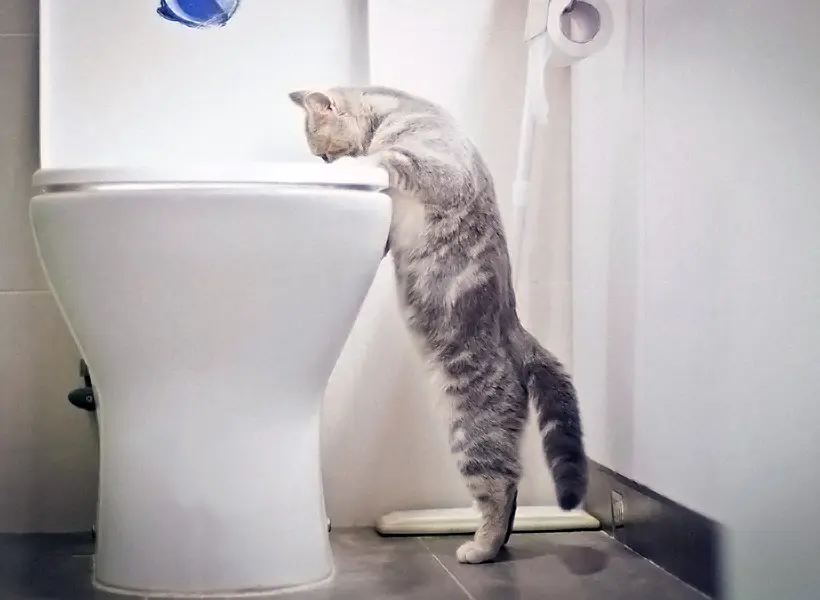Reasons You Should Never Flush Cat Poop Down Your Toilet - Critical Facts
Reasons You Should Never Flush Cat Poop Down Your Toilet - Critical Facts
Blog Article
The writer is making a few good observations relating to How to Dispose of Cat Poop and Litter Without Plastic Bags in general in this great article on the next paragraphs.

Introduction
As cat owners, it's necessary to be mindful of how we dispose of our feline good friends' waste. While it may seem practical to purge cat poop down the toilet, this technique can have detrimental effects for both the setting and human health and wellness.
Alternatives to Flushing
Luckily, there are much safer and much more responsible means to get rid of pet cat poop. Consider the adhering to alternatives:
1. Scoop and Dispose in Trash
The most typical technique of throwing away cat poop is to scoop it right into an eco-friendly bag and toss it in the trash. Make certain to utilize a specialized clutter scoop and get rid of the waste immediately.
2. Usage Biodegradable Litter
Go with naturally degradable pet cat litter made from materials such as corn or wheat. These litters are eco-friendly and can be safely disposed of in the garbage.
3. Bury in the Yard
If you have a yard, consider burying feline waste in a designated location far from veggie gardens and water resources. Make sure to dig deep sufficient to avoid contamination of groundwater.
4. Install a Pet Waste Disposal System
Buy a pet dog waste disposal system especially made for cat waste. These systems make use of enzymes to break down the waste, reducing odor and environmental impact.
Wellness Risks
Along with environmental problems, flushing pet cat waste can additionally pose health and wellness dangers to humans. Feline feces may contain Toxoplasma gondii, a parasite that can trigger toxoplasmosis-- a potentially severe illness, particularly for pregnant women and individuals with weakened immune systems.
Environmental Impact
Purging pet cat poop introduces harmful pathogens and parasites right into the supply of water, posturing a substantial danger to aquatic ecosystems. These impurities can negatively impact marine life and compromise water high quality.
Final thought
Responsible pet ownership extends past giving food and shelter-- it additionally involves proper waste monitoring. By avoiding purging pet cat poop down the commode and choosing different disposal techniques, we can minimize our environmental footprint and secure human wellness.
Why Can’t I Flush Cat Poop?
It Spreads a Parasite
Cats are frequently infected with a parasite called toxoplasma gondii. The parasite causes an infection called toxoplasmosis. It is usually harmless to cats. The parasite only uses cat poop as a host for its eggs. Otherwise, the cat’s immune system usually keeps the infection at low enough levels to maintain its own health. But it does not stop the develop of eggs. These eggs are tiny and surprisingly tough. They may survive for a year before they begin to grow. But that’s the problem.
Our wastewater system is not designed to deal with toxoplasmosis eggs. Instead, most eggs will flush from your toilet into sewers and wastewater management plants. After the sewage is treated for many other harmful things in it, it is typically released into local rivers, lakes, or oceans. Here, the toxoplasmosis eggs can find new hosts, including starfish, crabs, otters, and many other wildlife. For many, this is a significant risk to their health. Toxoplasmosis can also end up infecting water sources that are important for agriculture, which means our deer, pigs, and sheep can get infected too.
Is There Risk to Humans?
There can be a risk to human life from flushing cat poop down the toilet. If you do so, the parasites from your cat’s poop can end up in shellfish, game animals, or livestock. If this meat is then served raw or undercooked, the people who eat it can get sick.
In fact, according to the CDC, 40 million people in the United States are infected with toxoplasma gondii. They get it from exposure to infected seafood, or from some kind of cat poop contamination, like drinking from a stream that is contaminated or touching anything that has come into contact with cat poop. That includes just cleaning a cat litter box.
Most people who get infected with these parasites will not develop any symptoms. However, for pregnant women or for those with compromised immune systems, the parasite can cause severe health problems.
How to Handle Cat Poop
The best way to handle cat poop is actually to clean the box more often. The eggs that the parasite sheds will not become active until one to five days after the cat poops. That means that if you clean daily, you’re much less likely to come into direct contact with infectious eggs.
That said, always dispose of cat poop in the garbage and not down the toilet. Wash your hands before and after you clean the litter box, and bring the bag of poop right outside to your garbage bins.
https://trenchlesssolutionsusa.com/why-cant-i-flush-cat-poop/

Hopefully you enjoyed our article about How to Dispose of Cat Poop and Litter Without Plastic Bags. Thanks so much for taking time to read through our posting. So long as you liked our blog post kindly make sure you remember to share it. Thanks for your time. Please check up our blog back soon.
Information Report this page